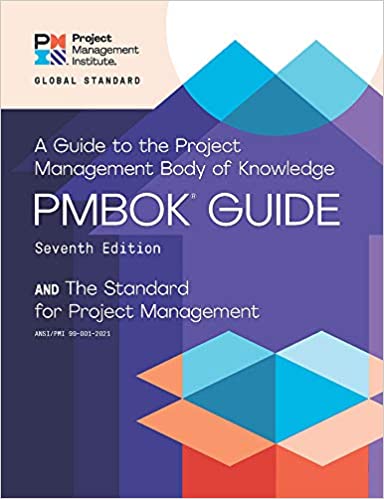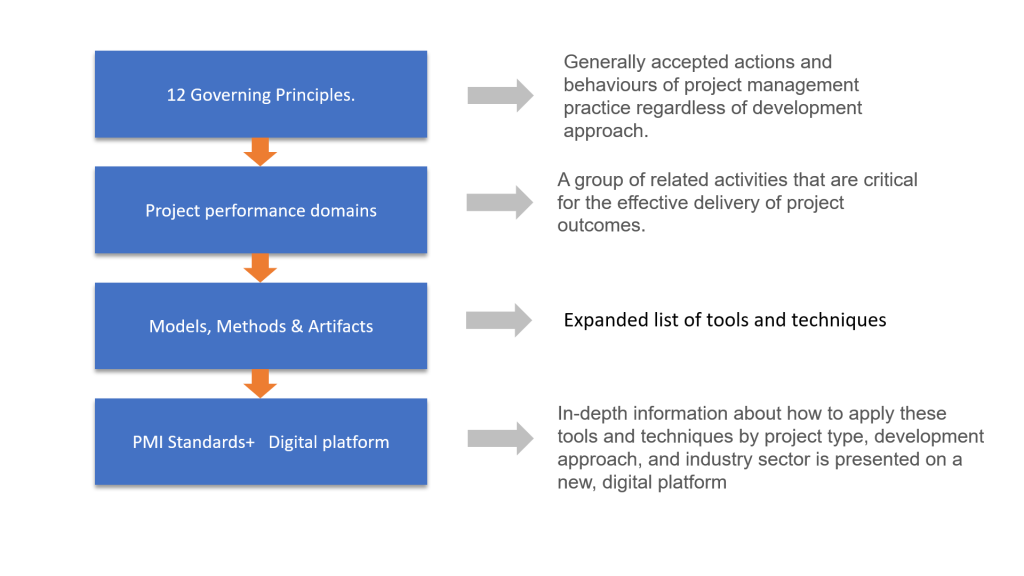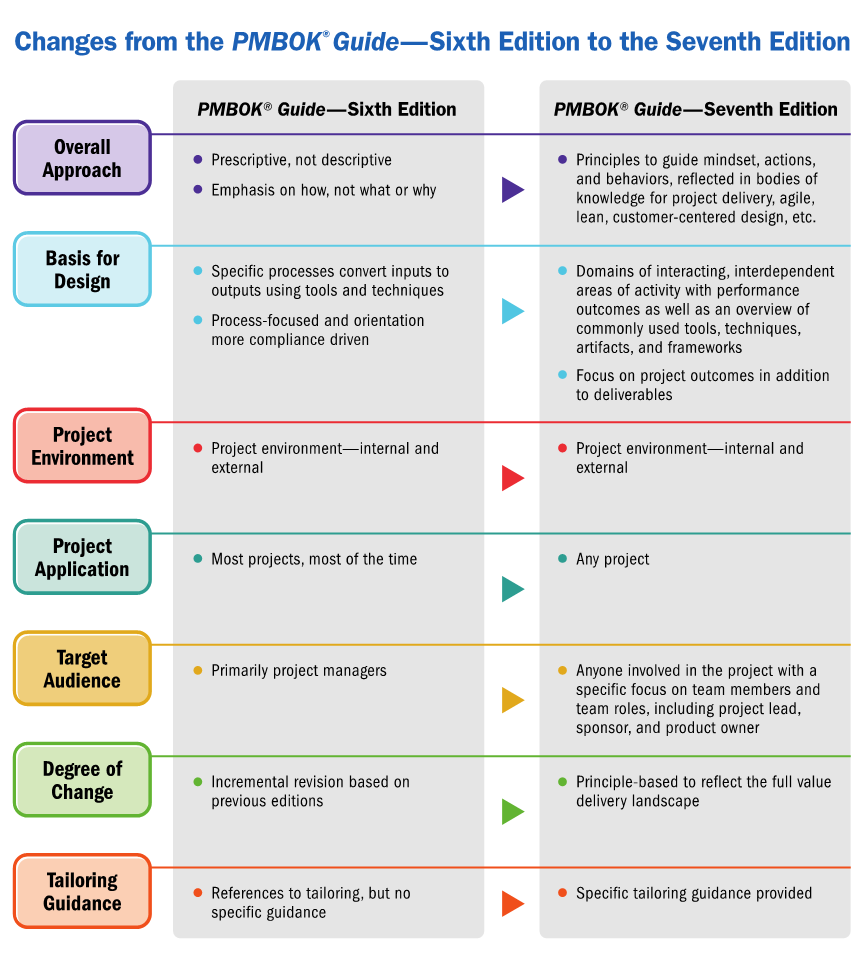
This is the first of a series of unboxing PMBOK7 articles explaining PMBOK7 which will help the readers to bridge between PMBOK6 and Agile to PMBOK7 very easily. Again I want to reiterate the fact that the foundations of project management cannot be disrupted very easily. If you know the basics of predictive project management and agile project management, then it is only a matter of establishing a traceability to the PMBOK7 structure. PMI, the publishers of PMBOK have time and again highlighting the fact that PMBOK is only a reference material and need not be mastered and remembered end to end like every other reference material. With these Unboxing PMBOK7 articles, my goal is to make the transition from PMBOK6 to PMBOK7 as smooth as possible.
Structure of PMBOK 7
From PMBOK version 6 onwards, PMI was trying to catch up with Agile Project Management (APM) which is the most suitable for managing certain types of projects, especially those ones where the scope is continuously evolving and the technology component is fast changing. PMBOK Version 7 can be seen as a natural progression of it. Like the 12 Agile Principles, which are the foundation of all agile frameworks, PMBOK7 also has 12 governing principles at the apex level followed by other components as shown in the diagram below.

12 Governing Principles
At the apex level are the 12 governing principles. These 12 principles based on the project management professions ethics governs the actions and behaviors of project management practice regardless of whether one is following predictive or adaptive project management styles.
- Stewardship – Be a diligent, respectful, and caring steward
- Team – Build a culture of accountability and respect
- Stakeholders – Engage stakeholders to understand their interests and needs.
- Value – Focus on value.
- Holistic Thinking – Recognize and respond to systems’ interactions.
- Leadership – Motivate, influence, coach, and learn.
- Tailoring – Tailor the delivery approach based on context.
- Quality – Build quality into processes and results.
- Complexity – Address complexity using knowledge, experience, and learning.
- Opportunities & Threats – Address opportunities and threats.
- Adaptability & Resilience – Be adaptable and resilient.
- Change Management – Enable change to achieve the envisioned future state.
Project performance domains
The second level comprises of the project performance domains;
- Team
- Stakeholders
- Life cycle
- Planning
- Navigating uncertainty and ambiguity
- Delivery
- Performance
- Project work
Models, methods & artifacts for enabling outcomes
This section at the third level more or less looks like the Inputs, Tools & Techniques and Outputs re-grouped as models, methods and artifacts. For each project outcome we have a set of models, methods and artifacts which help to achieve the project outcome.
At the fourth level is the PMIstandards+ digital platform which will guide on the application of Models, methods and artifacts based on project type, development approach and industry sector.

